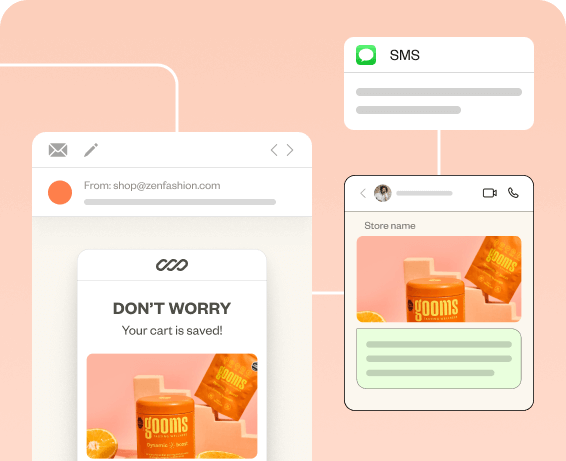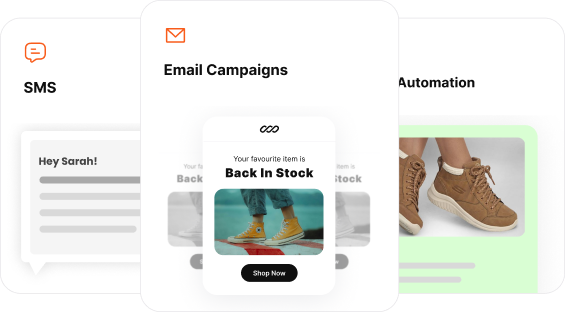Almost all businesses today have shifted from a product-centric approach to a customer-centric approach. One way to do this is through behavioral targeting.
Instead of guessing what customers want, marketers watch how they behave online. Then, send targeted messages based on their behavior.
If you’re still not using behavioral targeting in your marketing, you’re working with incomplete information about your customers. Meanwhile, your competitors are using behavioral patterns to win them over.
But the good news is, it’s never too late to catch up.
To get you started, in this blog, we have covered:
- Definition of behavioral targeting, along with its types and benefits
- Contextual vs behavioral targeting
- How you can target based on your customer’s behavior, along with examples
Send personalized targeted messages with a few clicks using Retainful’s pre-built behavioral segments.
What is Behavioral Targeting?
Behavioral targeting is a digital marketing strategy that uses data about a user’s online actions to send personalized, relevant ads and content.(send personalized emails, SMS , notifications etc ). It considers all the online activities like browsing activity, past purchases, shopping habits, and engagement levels in previous interactions.
What is Target Behavior?
Target behavior refers to the observable actions a user takes that are tracked and analyzed to understand their interests and intent. Campaign engagement, purchase habits, and app/website engagement are some target behavior examples.
4 Types of Behavioral Targeting
Based on where the user data is collected and how it’s used, there are 4 main types of targeting behavior.
The 4 types of behavioral targeting are :
- Retargeting
- Purchase Behavior
- App/ Website Engagement
- Email Personalization
1. Retargeting Also Known As Remarketing
Retargeting is where you target people who interacted with your brand but didn’t take the desired action. (making a purchase).
One example of retargeting in ecommerce marketing is abandoned cart recovery emails.
In abandoned cart recovery emails, store owners are sure that their customers have an interest in their product. So, they send targeted emails providing a gentle nudge to complete the purchase with discounts.
Here is an example of retargeting used in an abandoned cart recovery email. Moreover, it includes a discount code to encourage customers to complete their first purchase.

2. Purchase Behavior
Purchase behavior is one of the most reliable sources of targeting behavior. It refers to the actions customers take when buying products.
- What they buy (Purchase History)
- How often do they buy (Frequency)
- How much do they spend (AOV)
- Preferred categories or brands. (Preference / Interests)
In behavioral targeting, this data helps you segment your email list based on their buying habits. For example, you can target frequent buyers with loyalty rewards or upsell to high-value shoppers.
This McDonald’s rewards email shows how a loyalty program is used to track and reward purchase behavior.

Discover multiple segmentation types in one place at Retainful and launch your tailored email campaigns in minutes.
3. App/ Website Engagement
Engagement is one of the important key email marketing metrics that is used in behavioral targeting. It shows how your users interact with your business and services.
It takes into account of time spent on your website, features used, and frequency of visits. For unengaged and about to churn customers, send win-back emails with discounts to reengage them.
Here is an example of how Duolingo targets unengaged users with a reengagement email.
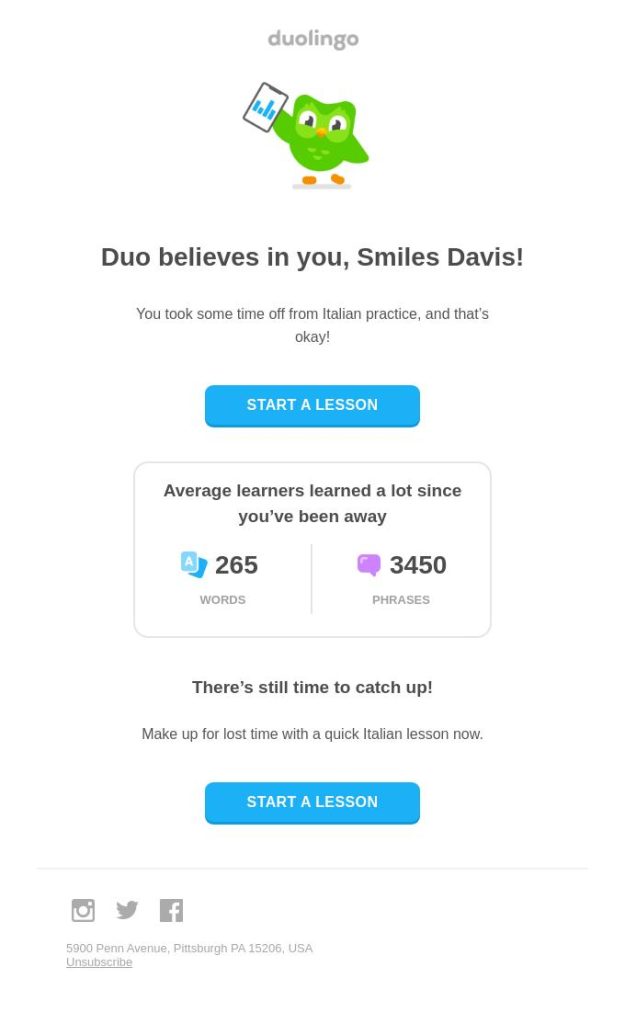
Related Reading: 70+ Win-back Email Subject Lines for Boosted Open Rates.
4. Email Personalization
Behavioral targeting plays a big role in email personalization. By tracking how users interact with your emails, website, or app, you can personalize product recommendations.
Moreover, you can create personalized discounts and product bundles that your customers want.
In addition to this, you can optimize your email interactions by:
- Number of emails you send
- When you send your emails
For example, Spotify looks at the music you love and puts together a playlist made just for you.

Top 5 Benefits of Behavioral Targeting
Behavioral targeting lets you create a more informed email marketing strategy that is in sync with your audience.
Here are the top 5 benefits of behavioral targeting:
- Improved relevance in ads and campaigns: Behavioral data helps you to personalize emails and ads that match each user’s interests. It makes the targeted emails and ads more relatable and relevant to your customers. Moreover, you can address their pain points more effectively.
- Increased engagement in email campaigns: When your targeted emails reflect and align with a customer’s actual behavior, they’re more likely to take action. As a result, the open rates, CTR, and overall engagement increase.
- Enhanced customer experience: Customers feel understood when they receive timely and relevant messages. It leads to a more satisfying brand experience and increases customer loyalty.
- Higher conversion rates: Personalized offers and messages based on real behavior guide users toward completing purchases. It increases your overall conversion rate.
- Greater ROI: With more targeted messaging and higher engagement, you reduce wasted marketing spend and increase your ROI manifold.
How to do Behavioral Targeting?
Now you know what and why part of targeting behavior. It’s time to know how to implement behavioral targeting in email marketing and ads.
The steps to do behavioral targeting are:
- Gather data
- Validate your data
- Segment your list
- Implement behavioral targeting
1. Gather Data
Start by collecting behavioral data from all available sources. The more touchpoints you track, the better your targeting will be.
What to track & Why:
- Website & App Engagement: Go beyond page visits. Track specific clicks, time spent on pages, and a user’s navigation path. This helps you identify their interests and stage in the customer journey.
- Email & SMS Interactions: Monitor which links are clicked, who forwards your messages, and who unsubscribes. This measures engagement and helps you fine-tune your messaging.
- Purchase History: Collect granular details like products purchased, total order value, and purchase frequency. This is crucial for segmenting customers by value and predicting future purchases.
How to gather data:
- Set Up Tracking Tools: Implement a tracking pixel or analytics tools (like Google Analytics) on your website.
- Define and Track Events: Configure your platforms to track specific events, such as “Add to Cart” or “Sign Up.”
- Integrate Your Platforms: Ensure your e-commerce platform, CRM, and email marketing software are connected to create a unified view of the customer.
It is extremely important to ask for consent from your customers while collecting data. It builds trust and keeps you compliant with regulations like GDPR and CAN-SPAM.
2. Validate Your Data
Not all data is useful. Clean and organize your data to remove duplicates, outdated info, and irrelevant behavior. This ensures you’re making decisions based on accurate data.
How to Validate Your Data:
- Remove Duplicates: Use your marketing automation tool to merge duplicate contact profiles. This ensures a customer’s entire behavioral history is stored under one record.
- Filter Irrelevant Behavior: Define what constitutes “irrelevant” data for your business. For example, if a user visited a product page once a year ago and hasn’t returned, that behavior may no longer be a good indicator of their current interest.
- Check for Accuracy: Implement a system to regularly verify email addresses and other contact information. You can use services that check for “bounces” or flag invalid email formats.
- Enrich Your Data: Use tools to fill in missing information about a customer, such as their geographic location or company name, to create a more complete profile.w to Validate Your Data
3. Segment your List
Use the validated data to create audience segments based on behavior. RFM is the most used method to identify high-value and low-value customers for behavioral targeting.
- Recency: How recently have customers purchased?
- Frequency: How often do they purchase?
- Monetary Value: How much did they spend in a given time?
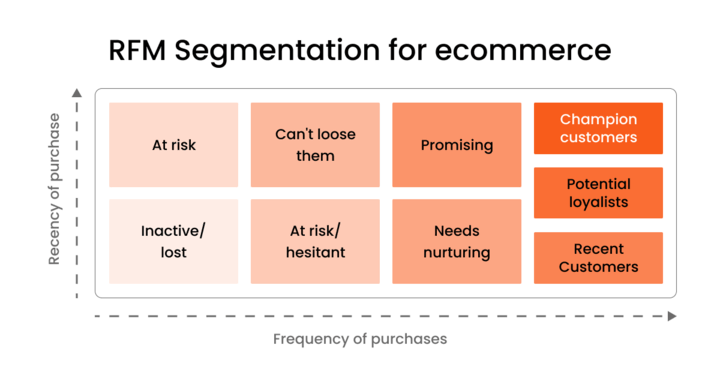
To effectively segment your list, along with the RFM method, use an email marketing funnel. With an email marketing funnel, you can segment like new subscribers, awareness stage, consideration stage, and loyal customers.
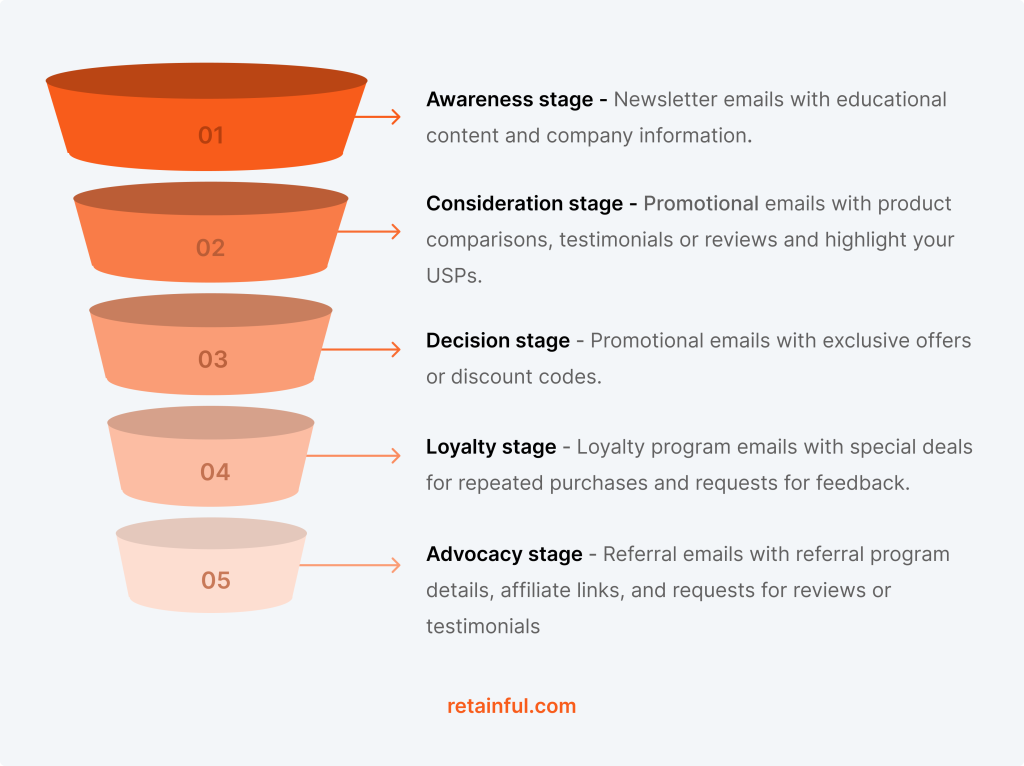
Related Reading: Customer Lifecycle Marketing – 16 Strategies for All Stages.
4. Implement Behavioral Targeting
Now that you’ve segmented your audience, you can finally start sending targeted ads and emails that aligns with customer’s behavior. Remember, people expect personalized interaction at every touchpoint in your business.
How to Implement Behavioral Targeting
- Select a Marketing Automation Tool: Choose a platform like Retainful that can handle dynamic segmentation and triggered campaigns. This software is essential for automating personalized messages.
- Define and Trigger Campaigns: Set up automated workflows that are triggered by specific behaviors. For example:
- Abandoned Cart: Trigger an email to a user who added items to their cart but did not complete the purchase.
- Post-Purchase: Automatically send a follow-up email to a customer with product care tips or cross-sell recommendations for related items.
- Win-Back: Send a re-engagement campaign to users who haven’t interacted with your site or emails in a specific period.
- Personalize Your Content: Use dynamic content to make each message unique. Include the customer’s name, reference the specific product they viewed, and offer a discount based on their purchase history.
- Track & Optimize: Continuously monitor the performance metrics and optimize your marketing channels.
Related Reading: 10 Best Email Marketing Software Comparison and Review.
Contextual Targeting and Behavioral Targeting
Contextual targeting displays ads based on the content of the webpage or app the user is currently viewing. Whereas behavioral targeting displays ads to users based on their past online behavior across different websites and apps.
Here’s a table showing the key differences between contextual targeting and behavioral targeting:
| Factors | Contextual Targeting | Behavioral Targeting |
| Focus | Content of the webpage/app | User’s past online behavior |
| Based on | Keywords, topics, and semantics of the content | Browsing history, searches, purchases, clicks, |
| Personalization | Less personalized, based on content relevance | Highly personalized, based on user actions |
| Audience Reach | A broader audience interested in a topic | Specific audience segments based on behavior |
| Privacy | Fewer privacy concerns | High privacy concerns. |
Customize ready-to-use discount email templates in Retainful to send a on-brand discount email within minutes.
Wrap Up!
Thanks to the behavior tracking technologies, behavioral targeting is no more a future concept. It’s the current marketing reality. By understanding how your customers behave online, you can deliver relevant, timely, and personalized experiences.
The good news? You don’t have to do it manually. With tools like Retainful, you can implement behavioral targeting through real-time behavioral segmentation and powerful automation.
Also Read:
- 13-Point Email Marketing Checklist to Get 100% Results
- 8 Best Re-engagement Email Examples to Reactivate Customers
- 11 Best Ecommerce Email Templates + Examples
Frequently Asked Questions
It tracks user actions like clicks, purchases, and browsing to tailor marketing content accordingly.
It improves engagement, relevance, and conversion rates by aligning marketing with user intent.
Data includes website visits, purchase history, email interactions, and app usage.
Yes, as long as you get explicit user consent before collecting and using their data.
Contextual targeting is based on content; behavioral targeting is based on user actions.
Examples include abandoned cart emails, product recommendations, and loyalty rewards.

